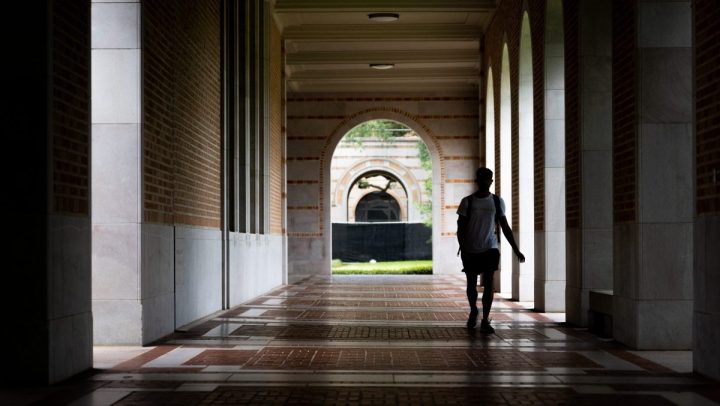
The hidden costs of transferring to a 4-year college

A stellar high school student in Brockton, Massachusetts, William Kimani earned so many credits at a nearby community college that he graduated from high school with an associate degree too.

The son of Kenyan immigrants, he thought it would save him time and money when he enrolled at the University of Chicago and transferred his credits.
Instead, he learned a hard lesson in college economics: The university told him none of the two-year associate degree credits would count toward his bachelor’s degree.
“Zero,” Kimani said on a recent morning, recalling the blunt email he received from college administrators in Chicago. It “was quite painful because I feel like the degree that I worked towards was a lot of work — a lot of effort.”
In a statement, a spokesperson for the university said transfer credits must come from institutions that grant bachelor’s degrees.
One of the supposed benefits of attending community college is that it offers an affordable path to a four-year degree, but that’s not the reality for many students. Some highly selective four-year colleges have policies that allow them to determine which credits count after a student enrolls. But others — like the University of Chicago — reject all credits from two-year institutions.
It’s a practice that costs students thousands of dollars per credit and prevents them from graduating on time with less debt, while colleges profit off their enrollment.
The Government Accountability Office estimated that, among students who transfer, about 43% of their college credits don’t end up counting toward a new degree — including private and public schools, as well as two- and four-year schools. The report included data on lost credits among students transferring between four-year institutions, but it also found that students attempting to transfer from a two- to a four-year college lost an average of 30% of their credits.
Meanwhile, at least 80% of community college students said their goal is to earn a bachelor’s degree. But historically, very few of them realize it. Only 1 in 6 community college students — or roughly 16% — graduate, according to the Community College Research Center at Columbia University in New York.
Four-year institutions often require students to take their classes.
“Colleges are businesses,” said Francesca Purcell, a senior lecturer at the Harvard Graduate School of Education, noting that there’s a big incentive to accept students.
“There is not a big incentive to accept all of their credits,” she said. “Given the financial situation that most four-year institutions are in, they need to survive.”
And that comes at the expense of low-income students like Simba Gandari, who had to fight to transfer his credits from a technical school in South Carolina to a four-year college in Wisconsin.

“It started to feel as if I was just another body and a way to make tuition,” said Gandari, who worked two jobs while earning his degree to support not only himself but his family in Zimbabwe.
“It was highly important for all of my credits to transfer because I needed to graduate within two years,” he said.
He said he was told all his credits would transfer when he was accepted at Cardinal Stritch University, a private Catholic four-year college in Milwaukee.
Then, on the eve of finishing his bachelor’s degree in sports management, his academic adviser told him that he still needed to take an English literature class despite having taken English classes in South Carolina.
He would have to enroll and pay for another semester.
“I was supporting myself, so I was just trying to figure out how I would even be able to pay for it and have the time to do it,” Gandari said. “It was discouraging.”
Gandari, who had already taken out nearly $50,000 in student loans, said college administrators did not seem to feel the same urgency he did to graduate on time. So he acted boldly, emailing Cardinal Stritch’s president directly to explain his circumstances.
The college ultimately agreed to accept his technical school English credit, allowing him to graduate faster.
The story didn’t end so well for Cardinal Stritch, which announced plans to close in April, citing enrollment and financial challenges.
Harvard’s Purcell sees fixing the credit pipeline as a diversity opportunity.
“If we could solve student transfer from community colleges, which serve the highest levels of low-income students and students of color, it would truly be transformative,” she said.
Some four-year institutions that don’t accept community college credits do recognize Advanced Placement credits, and research shows Black and Indigenous students have unequal access to advanced coursework.
Back in Chicago, William Kimani said it all exposes these institutions as businesses that tend to enroll white and Asian students.
“I think it shows ingrained inequality preferences towards suburban, more affluent students,” he said. “It shows where colleges’ priorities really are.”
There’s a lot happening in the world. Through it all, Marketplace is here for you.
You rely on Marketplace to break down the world’s events and tell you how it affects you in a fact-based, approachable way. We rely on your financial support to keep making that possible.
Your donation today powers the independent journalism that you rely on. For just $5/month, you can help sustain Marketplace so we can keep reporting on the things that matter to you.

















